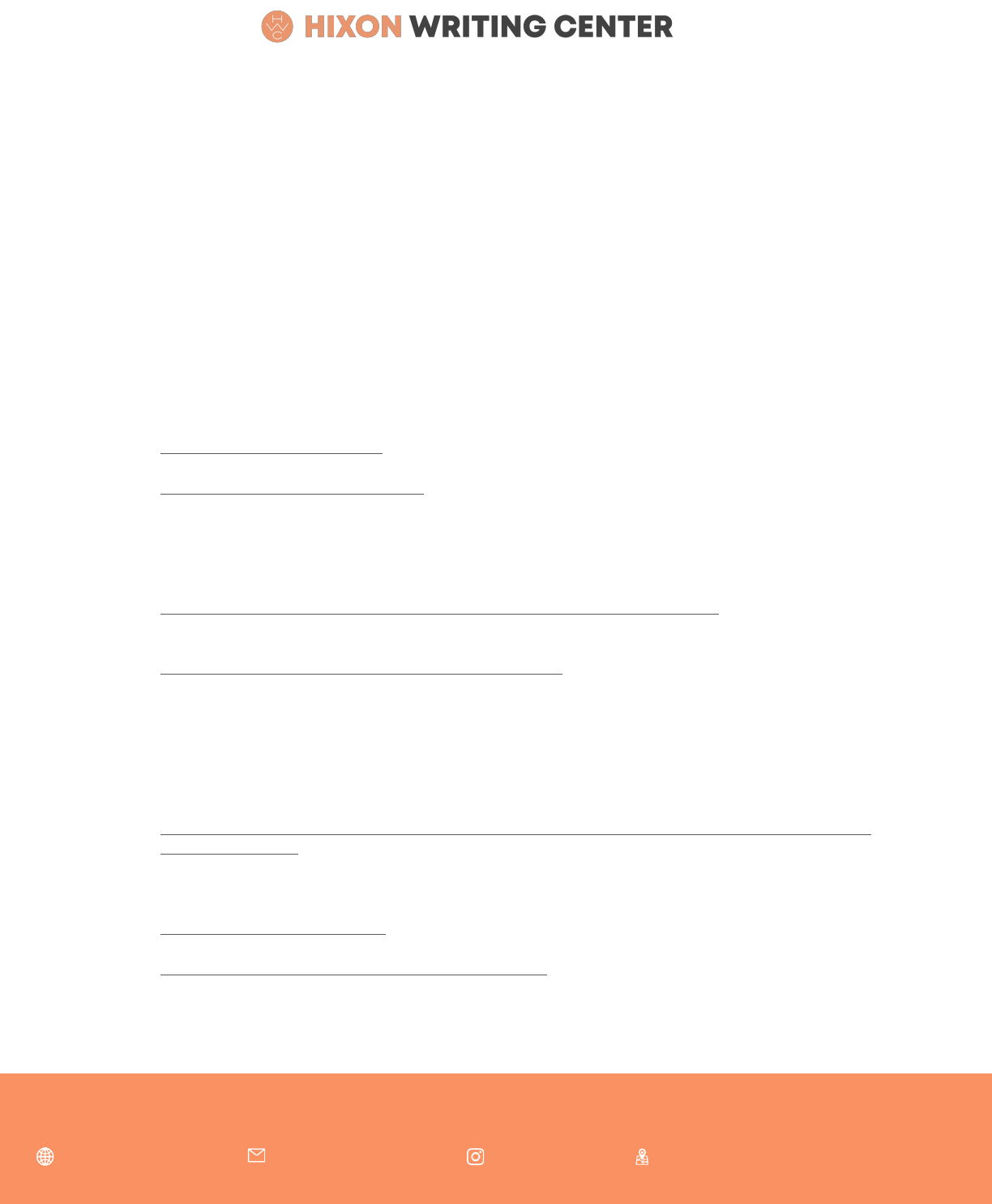
To learn more about the Hixon Writing Center or to get more resources on writing and communication:
writing.caltech.edu |
writing@caltech.edu |
caltechwrites |
3
rd
floor, Center for Student Services
_
Approaching the Graduate School
Statement of Purpose
In general, a statement of purpose for admission to graduate school should tell your reader:
•
Why you are compelled to do further study and research
•
How you have become qualified to pursue that study and research
•
What you hope to learn and what knowledge you want to produce
•
Why this graduate school is the ideal next step for you
In the early stages of developing the statement, writers generally negotiate the following concerns:
1. How “personal” should the statement of purpose be?
•
A good statement is personal. It should showcase details about your intellectual background
and goals that could not be in anyone else’s statement.
•
Personal does not mean emotional. It means telling the unique story of your intellectual
development. Rather than construct a narrative driven primarily by emotion, emphasize the
evolution of your intellectual interests.
2. What kind of a history is appropriate to this genre?
•
Don’t focus on narrating your initial discovery of your interest in your field. Unlike with
undergraduate admissions essays, readers skim or skip such stories, because this information
is perceived to be less relevant to your fitness for a graduate program.
•
Do describe specific study and research experiences and explain how these experiences have
motivated and prepared you to pursue advanced research in graduate school. If you did
something exceptional in high school, it may be worth mentioning that work, but keep the
primary focus on your work as an undergraduate and beyond.
3. What’s the right balance in the statement between the work you’ve done so far and what
you want to do?
•
Prioritize discussing interesting questions and findings that emerged out of your research and
study experiences. This may include limitations that you found in one context that prompted
you to seek out a different set of circumstances for future work. If you’re not sure what your
take-away was from a certain experience or how it relates to your desired field of study, look
back on any documents you generated from those experiences (e.g. SURF reports).
•
Show your literacy in the field, including knowledge of current trends and leading research
questions, as well as experience with of key methodologies or materials.
•
Connect past/current work to future research plans, i.e., questions or problems that you want
to investigate (or that you need further training to be equipped to answer).
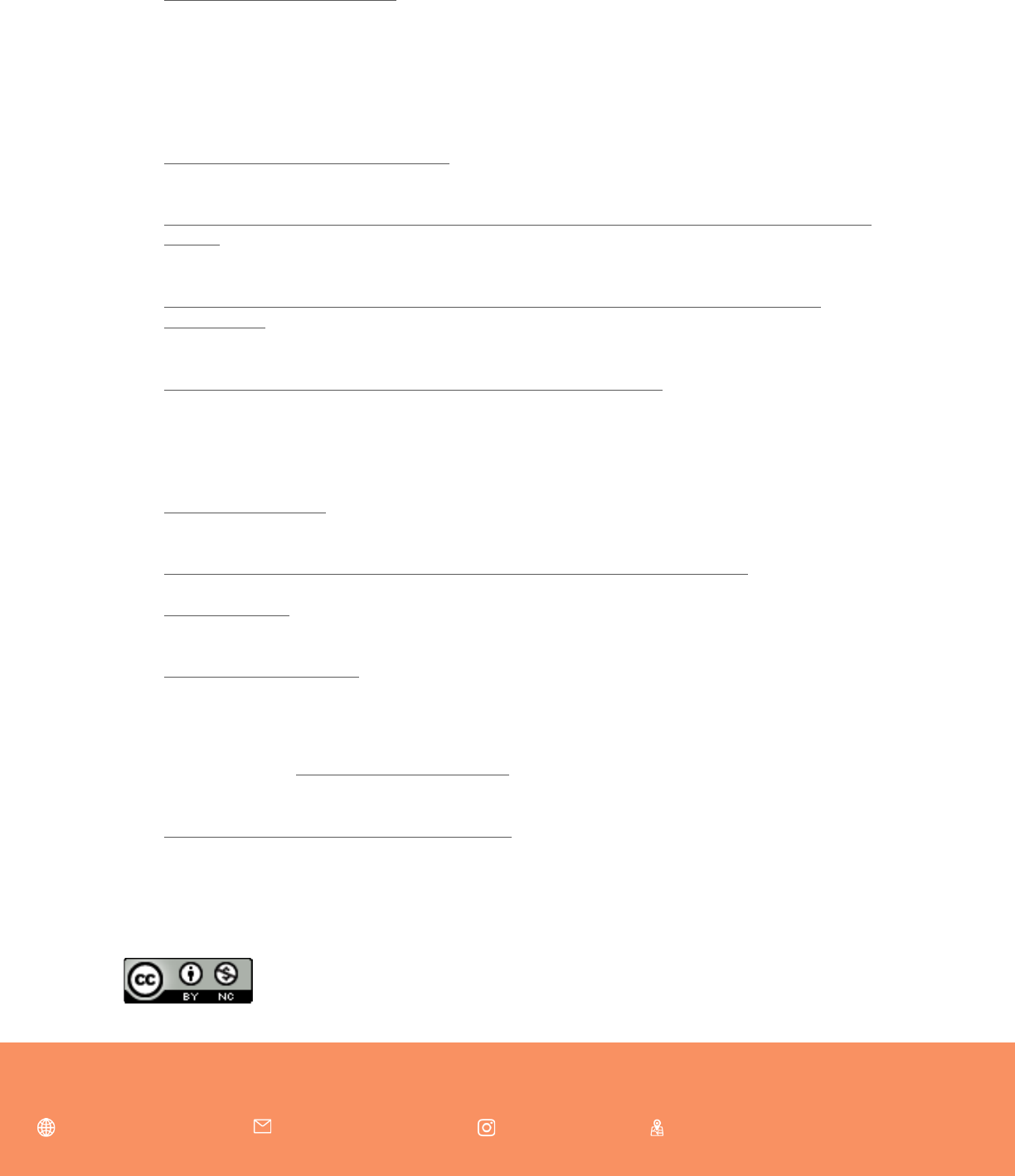
To learn more about the Hixon Writing Center or to get more resources on writing and communication:
writing.caltech.edu |
writing@caltech.edu |
caltechwrites |
3
rd
floor, Center for Student Services
•
Avoid long, chronological lists of research experiences that just list what you’ve done (e.g.,
“And then I…” “And the next summer I…” “My following project was…”). Instead, tell a story of
what you’ve learned, highlighting the most important experiences. This may proceed
chronologically; nevertheless, you need to emphasize the evolution of your thinking and your
work over time.
4. How much should you tailor your statement for each school?
•
Tailoring your statement is important. Showing that you not only want to go to grad school but
why want to go to this school sets you apart from others. This takes time, but graduate school
may take five or more years of your life, so you want to get into the right one.
•
It’s not enough to simply name faculty members you’d like to work with or labs you’d like to
work in. Be certain to indicate why those people or facilities interest you and how you could fit
in or contribute to the work they are already doing. Don’t just look at the school website;
familiarize yourself with their published work.
•
Be cautious when naming a single entity, suggesting that you could only work in that
configuration. If that person or lab gets no new students in the year you are to enter, it could
mean that you are not admitted. Express flexibility and receptiveness to new opportunities
without misrepresenting your true areas of interest.
•
Note specific requirements in the instructions for your statement. Some may ask for specific
elements or points of focus that others do not, (e.g., whether they ask for separate personal or
diversity statements).
5. What qualities should my writing have?
•
Show rather than tell. Don’t just say “I’d make a great researcher.” Prove it by sharing specific
stories about the kinds of questions that concern you and the skills you have to show that you
would.
•
Avoid melodramatic language or language that embellishes without content. Interesting detail,
rather than unusual language, is what draws the reader in to a personal statement.
•
Clarity is crucial. Faculty reading your statement are very busy people. If your statement is
difficult to understand at the sentence or paragraph level, they’ll give up on it and move to the
next candidate.
•
Proofread your final draft. Try reading your final draft out loud to see if the statement reads
exactly as you want.
6. Who can give me helpful feedback on my statement?
•
It is important to talk to mentors in your field, because the expectations for statements can
vary by discipline. Consider approaching the director of grad admissions in your field at
Caltech for guidance about expectations and common mistakes.
•
Show your working drafts to multiple readers, including those who know you well and those
who do not, as well as those within and outside your research specialization. Your school’s
writing center or career development center may be able to offer feedback on statements of
purpose. As you decide how to revise in response to feedback, be aware that no one knows
exactly what each admissions committee will prioritize.
This work is licensed under a Attribution-NonCommercial 4.0 International (CC BY-
NC 4.0). It may be shared under the conditions outlined by this license.

4
To learn more about the Hixon Writing Center or to get more resources on writing and communication:
writing.caltech.edu |
writing@caltech.edu |
caltechwrites |
3
rd
floor, Center for Student Services
Get Inside Your Readers’ Minds
Before you start writing your Statement of Purpose (SOP), spend time thinking about what your
reader needs from you and how they will read your statement.
No one knows exactly what a reader of your Statement of Purpose wants, because every
graduate admissions committee is composed of individuals who may have different priorities
for whom to recruit into an incoming class. As a thought exercise, try to imagine what it is like
to be a faculty member on the graduate admissions committee. You might have some of these
qualities:
• You are very busy with research, teaching, and other committee work. There just aren’t
enough hours in the day to do it all. This week, you need to read 100 application
packets. You can’t get to it during the week, so you’re going to spend all day Sunday
doing it while your partner takes the kids to the zoo. You figure that if you spend an
entire 8-hour day, you have about 5 minutes per application. When an application looks
like a bad fit, you quickly move on to save more time to spend on the stronger
applications. Also, if you finish early, you can squeeze in a run, and you haven’t had
time for one in a week.
• You want to admit students who are well-prepared in both their knowledge and skills for
the coursework and research that graduate school will require of them. You hope to find
clear and obvious evidence of this in the CVs, transcripts, and statements of purpose.
• You are also looking for students who will succeed in graduate school. Here, the
Statement of Purpose is key because a CV and transcript do not reveal this. For you,
success correlates with several qualities you hope to find in applicants:
o You want to see signs that students are dedicated to this area of study. Even if their
path to the work was indirect, they can convincingly explain why grad school is their
desired next step. They understand the field and are interested in the problems it
studies and the methods it uses to study them.
o You also look for signs of resilience—you know grad school is difficult and want to
make sure students can make adversity and failure a productive part of learning.
o You like to see signs of ingenuity. You want to find students that have shown signs
of original thinking and not just the ability to solve rote problems.
o One day you will be a co-author with your students, so you like to admit students
who write well.
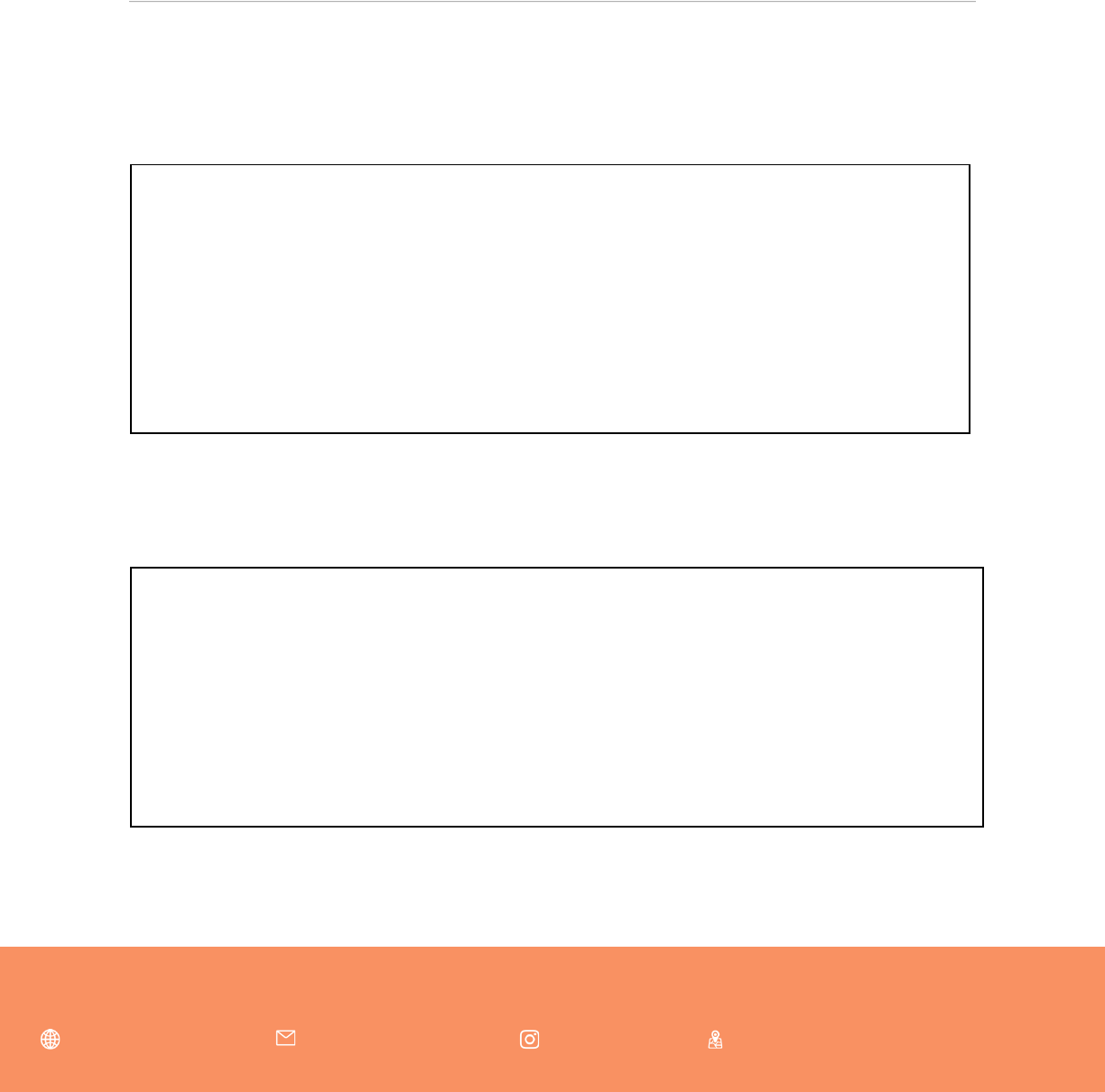
5
To learn more about the Hixon Writing Center or to get more resources on writing and communication:
writing.caltech.edu |
writing@caltech.edu |
caltechwrites |
3
rd
floor, Center for Student Services
• You care about diversity and inclusion. You want students from varied backgrounds and
with different identities, because you’ve found a diverse lab is a better lab in every
way.
• You want to find students who have researched your program and believe themselves
to be a fit for it. They want more than just the university bumper sticker. They know the
faculty, areas of specialization, and unique programs, and they’re excited about them.
REFLECTION QUESTIONS
Based on the faculty you have met in your field, what other qualities might your readers have
that our hypothetical reader did not?
Reflect on what you learned as you stepped into a possible reader’s mind. How did this
exercise shape your understanding of how to approach the Statement of Purpose? What
qualities does a good statement need to have in order to communicate well to this reader?
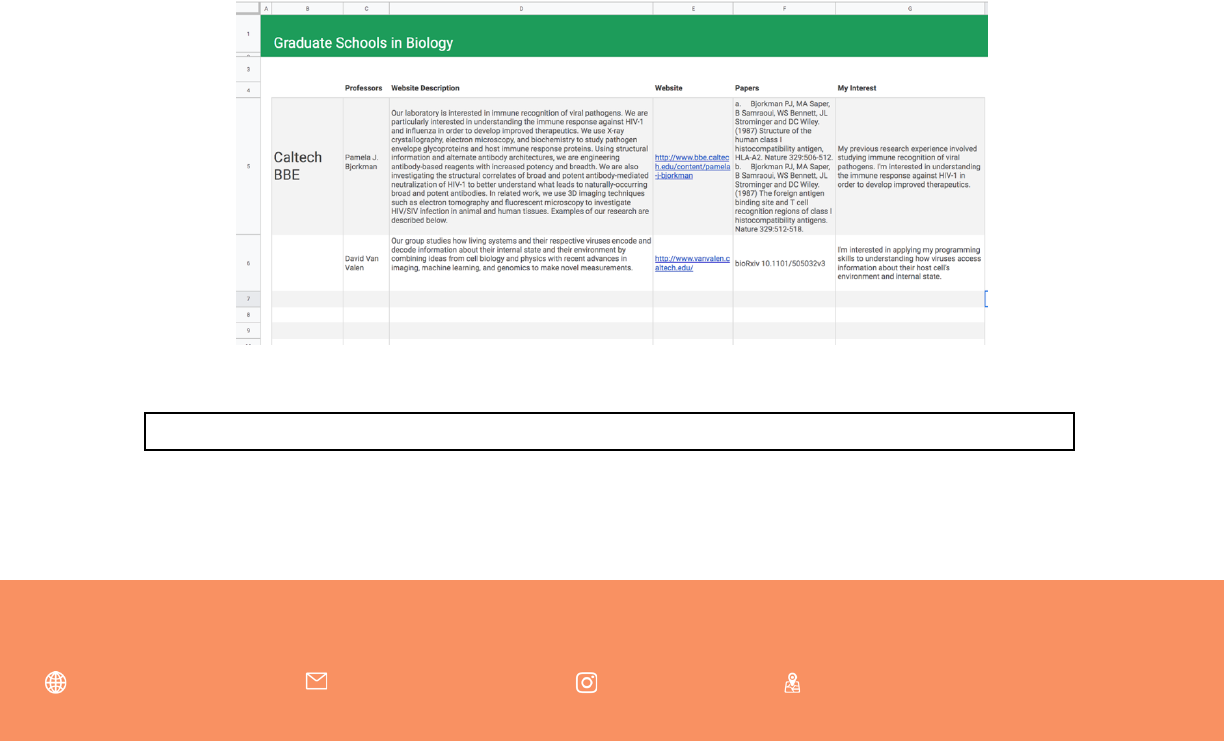
6
To learn more about the Hixon Writing Center or to get more resources on writing and communication:
writing.caltech.edu |
writing@caltech.edu |
caltechwrites |
3
rd
floor, Center for Student Services
Get to Know Your Schools
Take the time to research your schools before you begin writing your Statement of Purpose. As
a starting place, explore the university’s department website and identify:
• profiles of 3-5 faculty you are interested in working with and their areas of
specialization
• links to websites of faculty you hope to work with
• a list of these faculty members’ recent research papers
• the department’s mission statement and research program goals
• unique programs, seminars, or organizations that you are excited to participate in
through your research, teaching, or community outreach
• the university’s mission statement.
Stay organized:
As you’re researching schools, you may find it helpful to organize information in a shareable
Google spreadsheet (example below). You can organize the information however is most
helpful to you. Some ideas on what to include: Name of the program, professor names,
description of professor research, papers to read, and how their work connects to your past
research experience or your research goals as a graduate student. We will revisit this
spreadsheet later when we discuss how to customize your statement.
Share your Google Spreadsheet here:

7
To learn more about the Hixon Writing Center or to get more resources on writing and communication:
writing.caltech.edu |
writing@caltech.edu |
caltechwrites |
3
rd
floor, Center for Student Services
Develop Your Communication Goals
Before you begin developing your communication goals for your Statement of Purpose, reflect
on what you learned when you stepped inside a possible reader’s mind and when you
researched your schools. Because you have but a narrow window to communicate your
qualifications to your readers, you will need to prioritize your communication goals for your
Statement of Purpose.
To develop your communication goals, first locate the Statement of Purpose prompt on the
program website or the application portal. This statement may be titled differently, e.g.
Statement of Intent, Statement of Objectives, and even “Personal Statement”.
Copy and paste the prompts in the space provided in the next page along with the name of the
school/program. You may use a separate document if you need more space to organize these
prompts.
Some programs do not have a prompt beyond merely indicating that a Statement of Purpose is
needed. In this case, you should also record the name of the school with a note that the
program has no prompt. Fortunately, most programs are looking for similar information so don’t
be intimidated by writing a statement for programs that don’t have a prompt.

8
To learn more about the Hixon Writing Center or to get more resources on writing and communication:
writing.caltech.edu |
writing@caltech.edu |
caltechwrites |
3
rd
floor, Center for Student Services
Statement of Purpose Prompts:

9
To learn more about the Hixon Writing Center or to get more resources on writing and communication:
writing.caltech.edu |
writing@caltech.edu |
caltechwrites |
3
rd
floor, Center for Student Services
Statement of Purpose Prompts:
Schools with no prompt:

10
To learn more about the Hixon Writing Center or to get more resources on writing and communication:
writing.caltech.edu |
writing@caltech.edu |
caltechwrites |
3
rd
floor, Center for Student Services
Reframing Questions as Communication Goals
Reframing your Statement of Purpose as a rhetorical document that should meet a set of
communication goals
— rather than a checklist of questions you have to answer— gives you
freedom in choosing the experiences that will best demonstrate these qualities and how you
might organize this information. Additionally, this reframing strategy allows you to draft a
statement that will work for many schools. Remember, many readers will not have the
program’s prompt in their mind as they read your SOP.
Review the specific questions and requests in each prompt you entered on the previous page.
Highlight any similarities and differences between them.
In your examination, you will likely discover that many of the prompts are asking you to
communicate the following:
• Your preparedness for graduate work
• Your potential for success as a grad student in their program and beyond
• Your fit with the program and whether you will contribute to the program’s intellectual
culture
• Evidence of deliberate decision-making: have you carefully considered your decision to
pursue a graduate degree in this field?
These communication goals are not necessarily the same as the questions you’re expected to
answer in your SOP. For example, What you want to study at graduate school, Why you want
to study it, What experience you have in your field (intended field), and What you plan to do
with your degree are all questions you might be expected to answer. However, answering
these questions can help you meet the communication goals listed above.
Of course, if you find that a program has a unique set of important questions, you will need to
tailor your statement to address those questions.
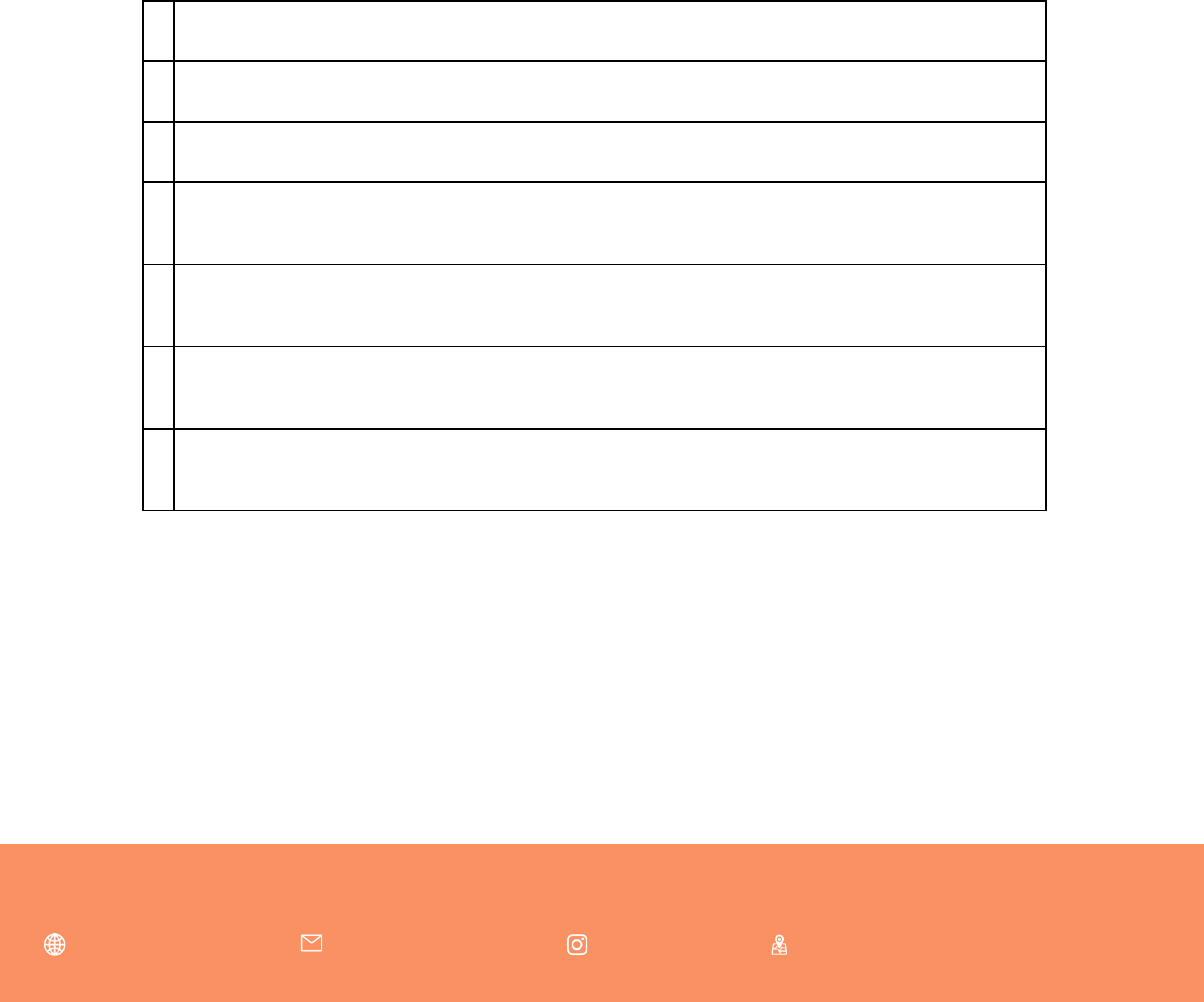
11
To learn more about the Hixon Writing Center or to get more resources on writing and communication:
writing.caltech.edu |
writing@caltech.edu |
caltechwrites |
3
rd
floor, Center for Student Services
Defining Your Communication Goals
We have defined the first 4 communication goals for you. What other qualities would you like to
communicate to your reader? You may write your communication goals in spaces 5-7 below.
Examples: (1) I have strong writing skills, (2) I care about STEM outreach and bringing STEM
education to underrepresented groups, (3) I love to innovate in my problem solving.
Remember that if you have too many goals, your SOP may feel unfocused to the reader and
may even be more challenging to write. Limit your goals to ones most important to you.
In my Statement of Purpose, I want to demonstrate that:
1
I am prepared for graduate work in my chosen field.
2
I have potential to succeed as a grad student in their program and beyond.
3
I am a good fit with the program and will contribute to the program’s intellectual culture.
4
I have carefully considered this decision to pursue a graduate degree in this field.
5
6
7
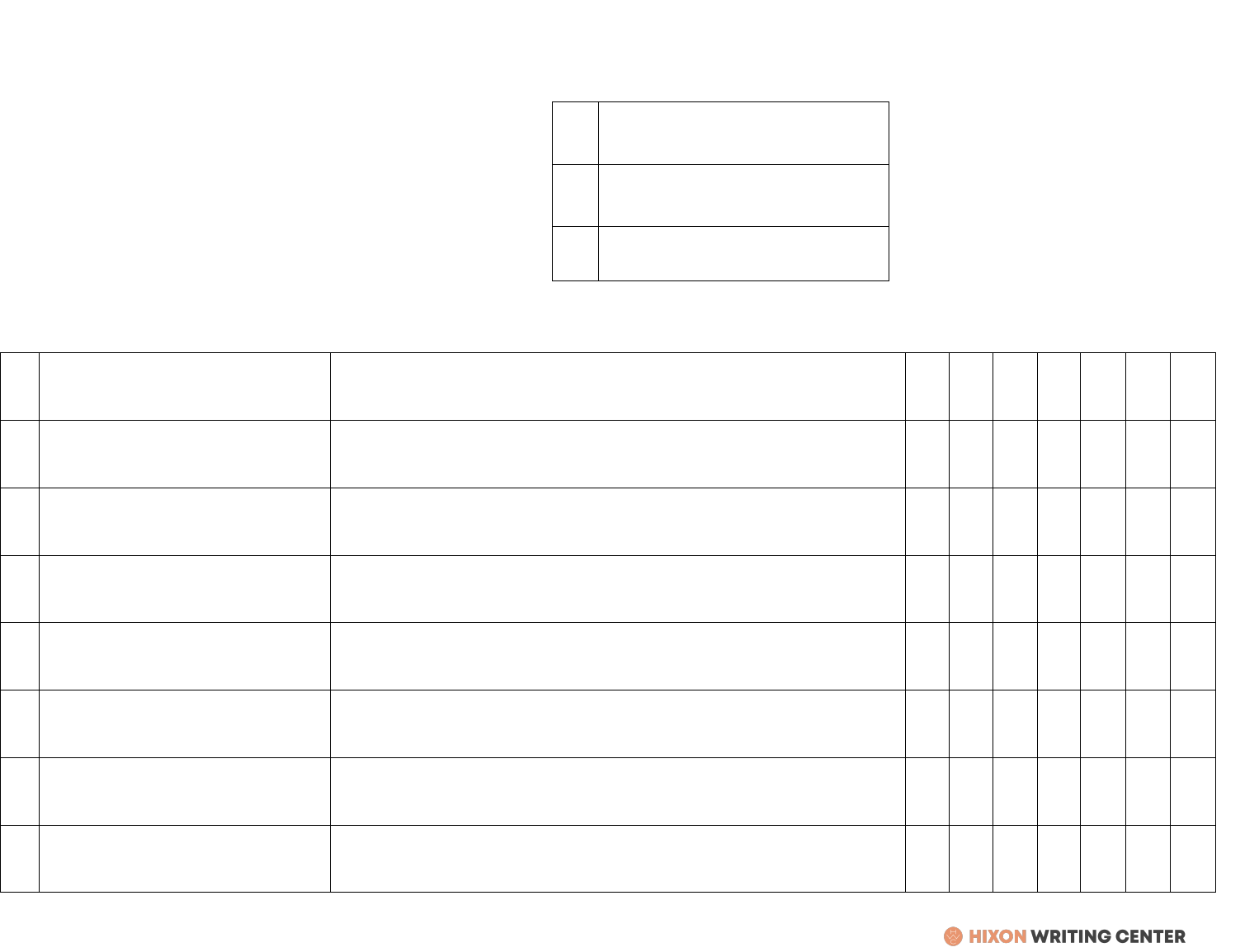
Write in your own goals
1
2
3
Experience/Background
Meaning/Value
1
2
3
1
2
3
4
5
6
7
8
Preparedness for grad school
Potential for success
Fit for school/program
Deliberate decision-making
This worksheet is designed to help you (1) evaluate the strength and
relevance of your experiences and (2) develop a structure and
outline for your SOP. Write down major experiences you're
considering for your SOP and the meaning/value of each experience
(e.g. what quality or skill it demonstrates, how it shaped your
decision to pursue grad school, how it shaped your research interest,
or what it made you do next). In this stage of your planning, focus on
major experiences and worry about whether they belong in your SOP
later. Use the Communication Goals on the right to check off whether
your experiences meet that specific goal. You may write in your goals
from the Develop Your Communication Goals page.
Statement of Purpose Meaning Making Worksheet
Your goals
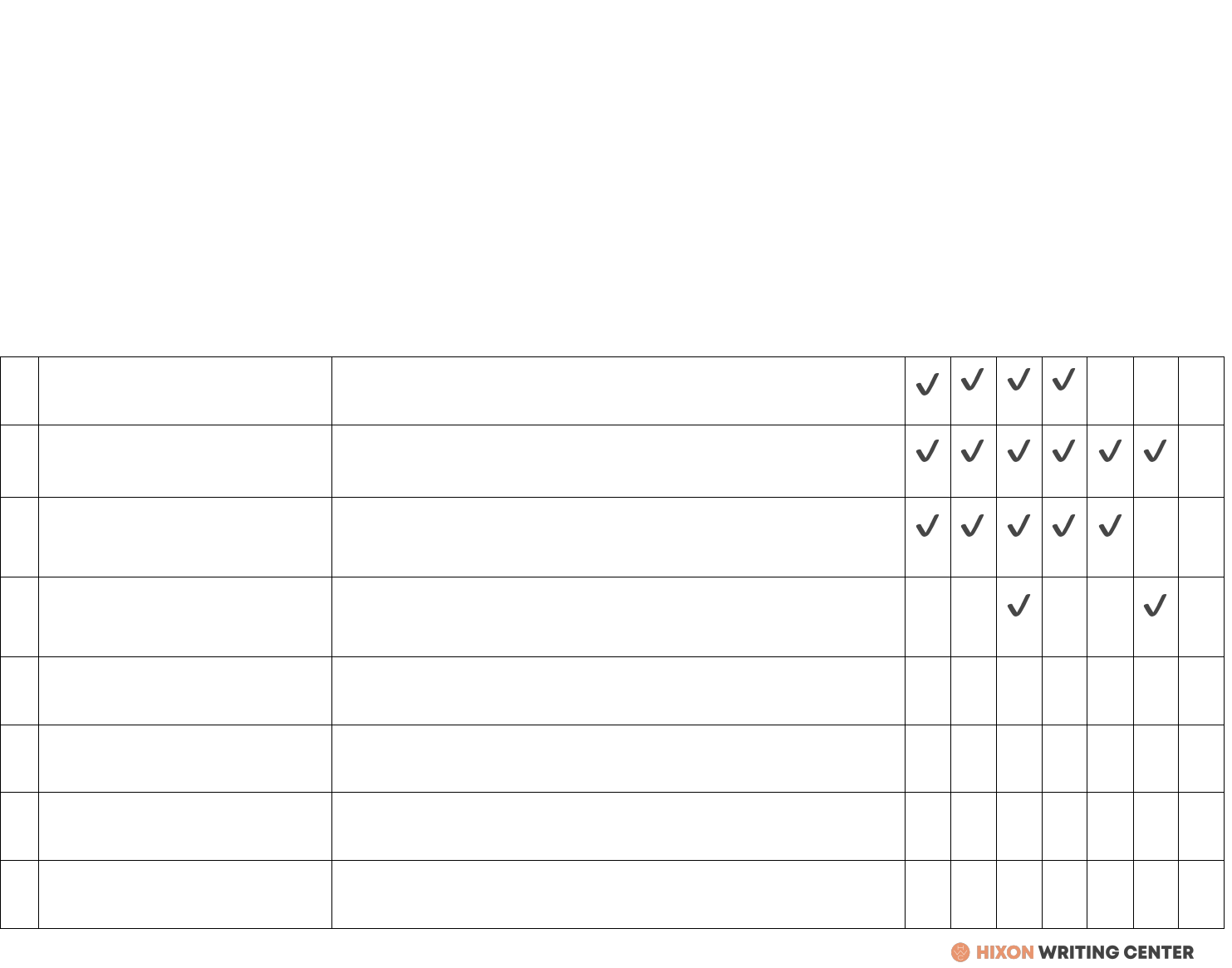
Experience/Background Meaning/Value
1
SURF 2016 - Astronomy
My first research experience that gave me a glimpse of astronomy and
also helped me developed my passion for the stars.
✔
✔
✔
✔
2
SURF 2017 - Astrophysics (Prof
Marcolli lab)
This experience brought me close to what I want to study in grad school. I
also learned how to think creatively on how to solve problems. I also had a
great female professor as a mentor.
✔
✔
✔
✔
✔
✔
3
(continued from SURF 2017)
SURF 2018 - Astrophysics (Prof
Marcolli lab)
Showed that I can stick with a problem and work hard to produce
meaningful results. It also confirmed my decision to go to grad school
✔
✔
✔
✔
✔
4
Outreach: robotics for
disadvantaged communities
(2016-2018)
I care deeply about diversity and the advancement of underrepresented
groups in STEM. This experience demonstrates my leadership and
compassion for science.
✔
✔
5
Summer Science Program (2014,
sophomore in HS)
Shows that I have been interested in science from a very young age
6
7
8
Preparedness for grad school
Potential for success
Fit for school/program
Deliberate decision-making
C
REATIVE PROBLEM
-
SOLVING
P
ASSIONATE ABOUT DIVERSITY IN
STEM
Below is an SOP Meaning Making Worksheet from a student who is applying for Astrophysics graduate
programs. This student chose to list major experiences in her life that she believes has influenced her
path to graduate school. Remember, certain experiences that are relevant or meaningful to one student
may not be as meaningful to you. For example, this student assigns a lot of value to their first
undergraduate research experience whereas you may not feel as strongly about yours. Additionally,
both the meaning/values assigned to each experience and the checkmarks under the Evaluation Criteria
represent subjective evaluations of this student’s experiences. This example should not be taken to
mean that there is a right and wrong way to weigh your experiences.
Sample Statement of Purpose Meaning Making Worksheet
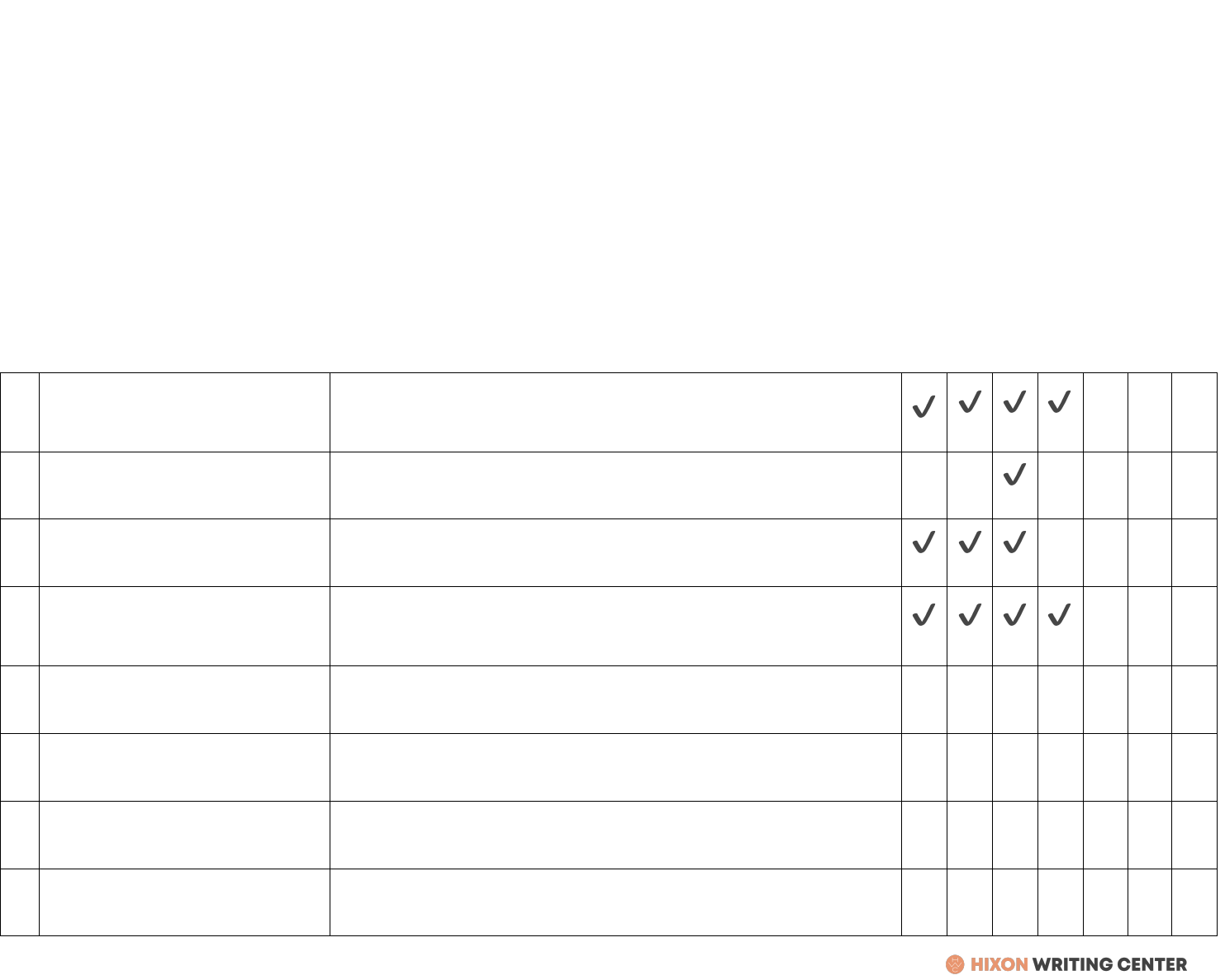
Experience/Background
Meaning/Value
1
SURF 2021 in neurobiology
First research experience that showed me the power of using
imaging technology to better understand the brain; mentorship;
communication skills; shows I’m capable of doing research
✔
✔
✔
✔
2
Outreach for STEM in K-12
Leadership and caring about my community
✔
3
Tutoring and TAd in biology
Demonstrates my love for teaching, knowledge of the field, and
wanting to be a professor
✔
✔
✔
4
Took graduate level courses in
Biology/Neurobiology as an
undergraduate
Demonstrates my knowledge and skillset in my area of study
✔
✔
✔
✔
5
6
7
8
Below is an SOP Meaning Making Worksheet from a student who is applying for Astrophysics graduate
programs. This student chose to list major experiences in her life that she believes has influenced her
path to graduate school. Remember, certain experiences that are relevant or meaningful to one student
may not be as meaningful to you. For example, this student assigns a lot of value to their first
undergraduate research experience whereas you may not feel as strongly about yours. Additionally,
both the meaning/values assigned to each experience and the checkmarks under the Evaluation Criteria
represent subjective evaluations of this student’s experiences. This example should not be taken to
mean that there is a right and wrong way to weigh your experiences.
Preparedness for grad school
Potential for success
Fit for school/program
Deliberate decision-making
Sample Statement of Purpose Meaning Making Worksheet

15
To learn more about the Hixon Writing Center or to get more resources on writing and communication:
writing.caltech.edu |
writing@caltech.edu |
caltechwrites |
3
rd
floor, Center for Student Services
Draft an Outline
Although not always necessary and not always the path taken by the enthusiastic Statement of
Purpose writer, starting with an outline can save you a lot of time and energy. An outline will
give you flexibility in organizing your experiences and qualifications without committing very
much writing to paper. It can also help you envision where you want to take your statement and
how you’ll get there.
Reflect on the experiences you listed in the SOP Meaning Making Worksheet and how you
evaluated them. Can you see how you might separate and group your experiences? Can you
logically connect different experiences? Can you organize these experiences in an order that
makes sense? Can you see what experience can easily find a home in your statement and
which do not?
There are several ways you can organize your SOP. Whatever organizational scheme you
choose, make sure that the structure supports your narrative and aligns with the readers’
expectations. Below are a few suggestions on how you might organize your experiences and
qualifications for your SOP. You can even mix them to suit your needs.
Some schools may provide you with suggestions on how to compose your statement. Consider
using their template as a starting place for a statement that you can tailor for other schools.
Suggestions for Organization:
These examples are simplified outlines only, where each enumerated experience may contain
multiple meanings and values. For example, a research experience may have allowed a
student to co-author a paper or present their work at a national conference, but we have not
indicated it in the outline. Additionally, we do not indicate where a student might tailor their
statement for a specific school.

16
To learn more about the Hixon Writing Center or to get more resources on writing and communication:
writing.caltech.edu |
writing@caltech.edu |
caltechwrites |
3
rd
floor, Center for Student Services
Chronological Order
A common approach for structuring the SOP is to lay out major experiences chronologically.
This approach works especially well in demonstrating how your research interests and goals
have evolved and matured over time and with each new experience or project. One concern
students may have in choosing a chronological structure is that their SOP may read like an
extended version of their CV/resume. To make your SOP more engaging, weave in a narrative
between your experiences. Reflect on what each experience taught you, how it shaped your
research interest/goals and your desire to pursue graduate school, or how it connects to future
goals.
EXAMPLE FROM A ASTROPHYSICS MAJOR APPLYING TO GRADUATE SCHOOL IN ASTROPHYSICS:
1. Introduction
2. 2016 Harvey Mudd Research Internship in Astronomy
3. 2017 Harvard REU Astronomy
4. 2018 SURF Caltech Astrophysics
5. 2018-present Caltech ongoing academic research in Astrophysics
6. Advanced Coursework and TAships in physics, astrophysics
7. Conclusion
Relevance to Intended Field of Graduate Study
Another common approach is to group and prioritize research experiences that are most
relevant to your intended field of study. You may find your outline to be in reverse
chronological order. This approach works well for students who (1) find their current or most
recent experience to be more relevant or more meaningful than earlier experiences or (2) who
take a more circuitous route to their intended field or grad school altogether. Grouping and
prioritizing experiences by relevance can help streamline your story and keep you from having
to write a tangled narrative around your less relevant but significant experiences. Again, to tie
these separate experiences together, reflect on what each experience taught you, how it
shaped your research interest/goals and your desire to pursue graduate school, or connect it to
future goals. When you discuss less relevant experiences later in the SOP, you can focus on
applicable skill sets rather than the research field.
EXAMPLE FROM A CS/EE MAJOR APPLYING TO GRADUATE SCHOOL IN COMPUTER SCIENCE (CS):
1. Introduction
2. Advanced Coursework and TAships in CS
3. 2018 SURF Caltech - CS- Machine Learning
4. 2016 SURF NASA JPL- Astronomy - Mathematical Modeling
5. 2017 Venture Capital Firm - Software Engineering Internship
6. Conclusion

17
To learn more about the Hixon Writing Center or to get more resources on writing and communication:
writing.caltech.edu |
writing@caltech.edu |
caltechwrites |
3
rd
floor, Center for Student Services
Quality/Expertise
A less common approach is to organize your SOP by qualities or expertise. This approach
would work well for students who do not have much experience in their intended field of study.
It would also suit those who have multiple/extended research projects with one research
professor over several years. However, students who fall into this category can easily use
other organizational schemes. One challenge in prioritizing by qualities/expertise is that a
single experience may illustrate multiple qualities and expertises; if experiences are divided
and distributed over the entire SOP, your readers may struggle to keep track of your growth as
a scientist, identify deliberate decision making toward graduate school, or understand your
contributions to a specific research project.
EXAMPLE FROM A NON-CS MAJOR APPLYING TO GRADUATE SCHOOL IN COMPUTER SCIENCE (CS):
1. Introduction
2. Advanced Coursework in CS
3. Algorithm Development Expertise
4. 2018-2019 in Chemistry
5. Creative and Critical Thinking Skills
6. 2018 SURF in Chemistry
7. 2017 SURF in Neuroscience
8. Communication skills
9. Co-authored a paper in chemistry (2018)
10. Presented posters and gave talks at conferences
11. Conclusion

18
To learn more about the Hixon Writing Center or to get more resources on writing and communication:
writing.caltech.edu |
writing@caltech.edu |
caltechwrites |
3
rd
floor, Center for Student Services
Outline
Use the space below to write your outline.

19
To learn more about the Hixon Writing Center or to get more resources on writing and communication:
writing.caltech.edu |
writing@caltech.edu |
caltechwrites |
3
rd
floor, Center for Student Services
Customize Your Statement
It is essential that you customize your Statement of Purpose to every school/program that you
apply to. Your statement should tell the committee why you chose to apply to their
school/program. In most cases where schools are looking for the same information, you may
not need to re-write your entire statement from the ground up (unless you really want to).
Different parts of your statement can be shared across the different statements. For example,
you may find that the description of your research experiences do not need to be customized if
you’re applying to very similar programs. However, you should make a concerted effort to
customize as much of your statement as possible.
To begin customizing your statement, refer to your Google Spreadsheet from Know Your
School
s.
Questions to help you connect program-specific information with your relevant experiences and
research goals:
• Why am I interested in working with the faculty I’ve listed?
• What are each of these faculty member’s current research interests and how do these
inter
ests align with my research and career goals? Read more than one of their
papers to develop a deeper understanding of the direction of their work.
• With an understanding of each faculty member’s current research, how can I contribute
meani
ngfully to their lab and its respective field? How does my relevant experiences
make me a good fit for the research being done by this faculty member?
• How can I connect my findings about this specific program to support my intended
communicat
ion goals for my intended readers?
• How can I thoughtfull
y organize my relevant experiences to communicate why I am a
good fit for this specific program? Where in the SOP can I connect my relevant
experiences and goals to the specific program I am applying to?

20
To learn more about the Hixon Writing Center or to get more resources on writing and communication:
writing.caltech.edu |
writing@caltech.edu |
caltechwrites |
3
rd
floor, Center for Student Services
Suggestions on where to tailor your statement:
• Readers may expect to find your “tailoring” near the conclusion of your SOP. This can
take the form of a penultimate paragraph that summarizes why you chose this specific
graduate program, why you are a good fit, and who are faculty you want to work with.
• You may also bookend your SOP with tailored paragraphs both at the beginning and
end of your
statement.
• In addition to writing customized intro and concluding paragraphs, you can tailor all
throughout the statement. Below are a few guiding questions to help you:
o Can I immediately connect the overarching research goals of a previous
experience to the interests of the program or a professor whose group I’d like to
join?
o Have I developed advanced knowledge in a particular theory or a unique skill
set that I hope to apply or explore further with a professor at the school I’m
applying to?
o How did this specific experience shape my research interest and how do those
interests align with the faculty’s research goals?
REFLECTION QUESTION
How and where might you customize your statement?
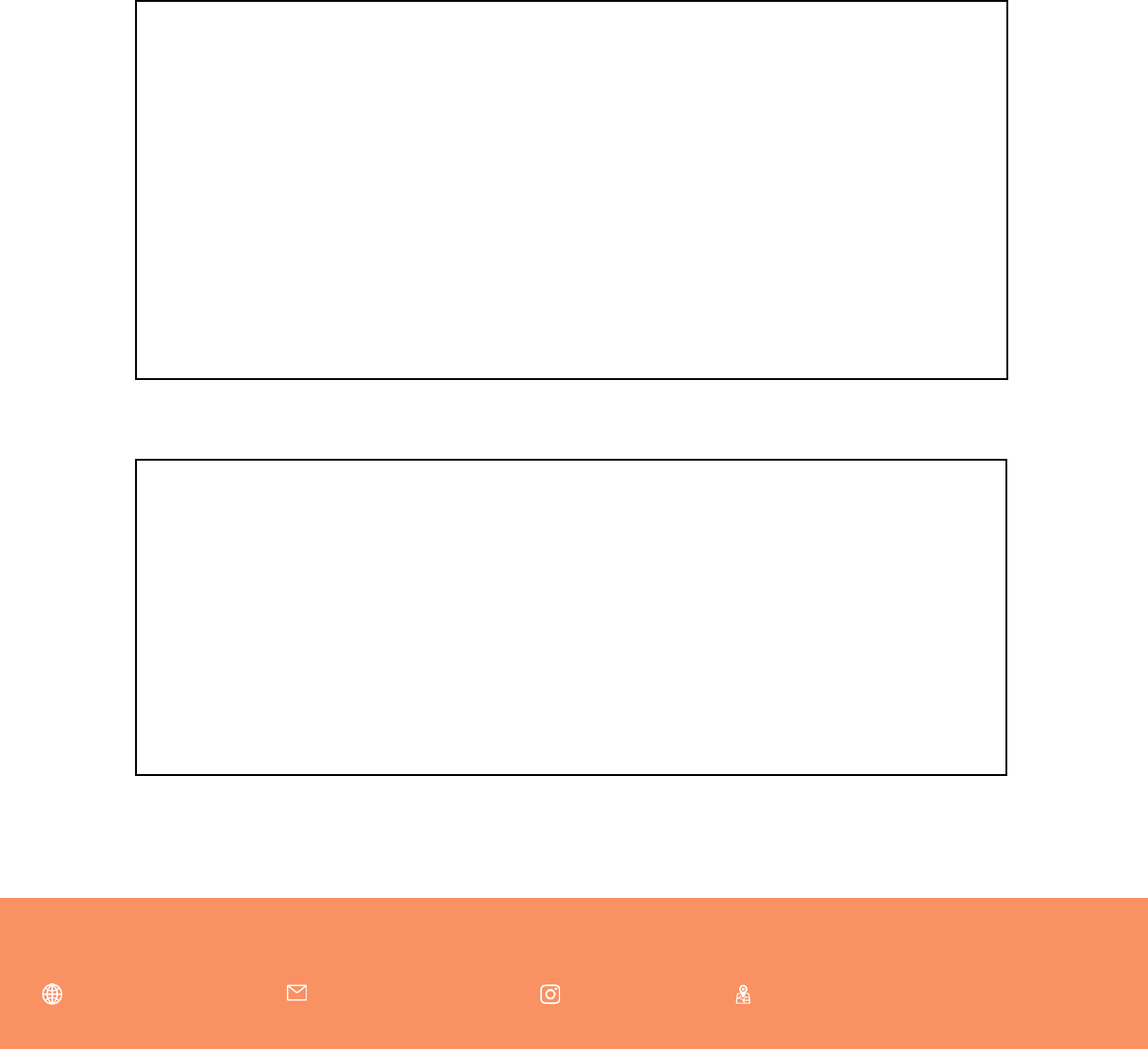
21
To learn more about the Hixon Writing Center or to get more resources on writing and communication:
writing.caltech.edu |
writing@caltech.edu |
caltechwrites |
3
rd
floor, Center for Student Services
Make a Revision Plan
When revising, experienced writers tend to begin by addressing "global concerns" (content,
structure, and organization) before moving on to "local concerns" (sentence-level grammar and
style). After all, you don't want to spend ages tweaking a sentence that you don't end up using
in the final draft of the Statement of Purpose.
(1) Global Revisions
What content changes do I want to make?
What structural and/or organizational changes do I want to make?
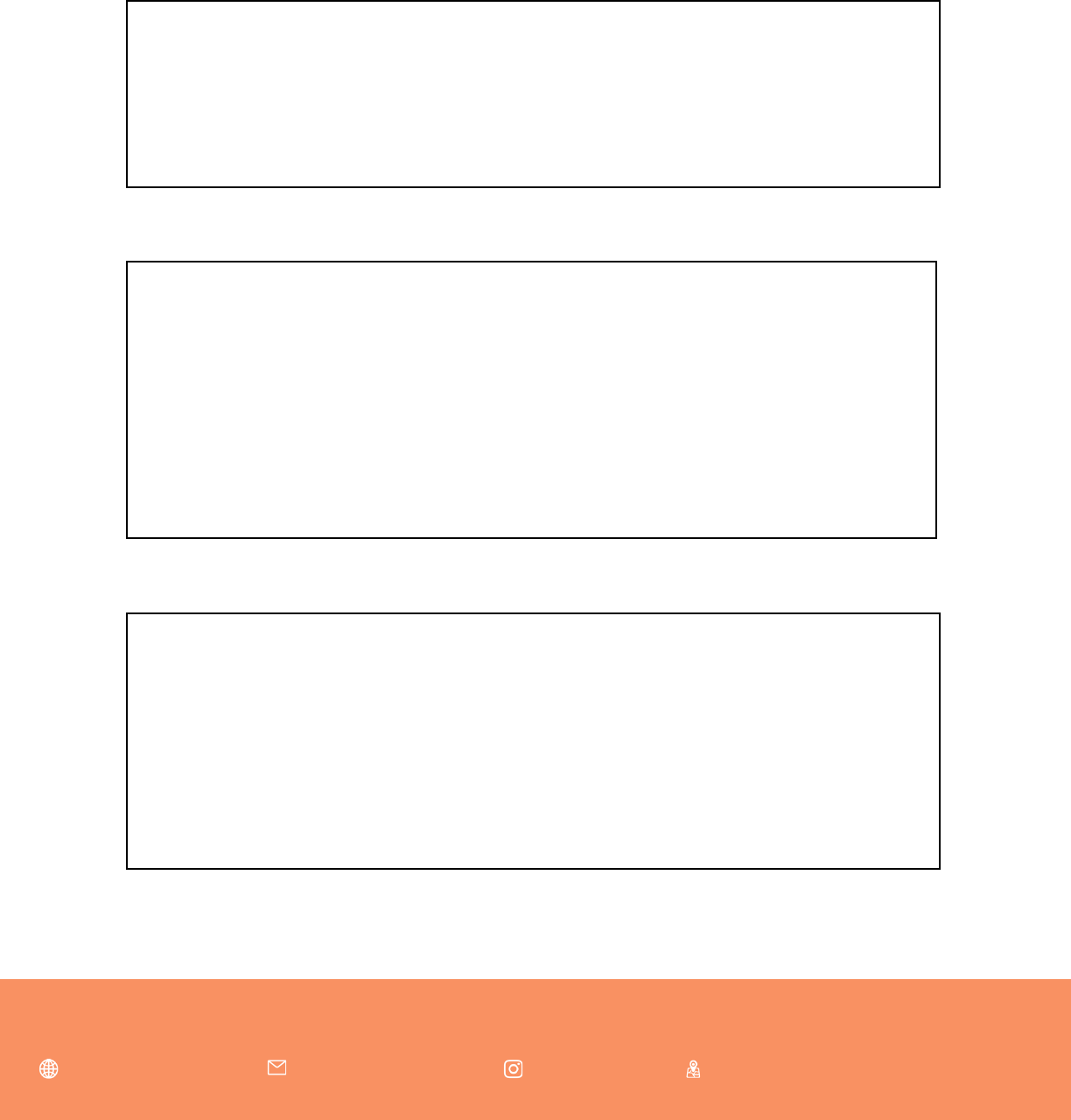
22
To learn more about the Hixon Writing Center or to get more resources on writing and communication:
writing.caltech.edu |
writing@caltech.edu |
caltechwrites |
3
rd
floor, Center for Student Services
(2) Local Revisions
What types of clarity issues tend to appear in my writing (e.g., unnecessary nominalizations,
unclear pronouns, large gap between subject and verb)?
Where can I be more direct and concise in my writing?
What other kinds of grammar, style, and usage issues do I need to address?

23
To learn more about the Hixon Writing Center or to get more resources on writing and communication:
writing.caltech.edu |
writing@caltech.edu |
caltechwrites |
3
rd
floor, Center for Student Services
Seeking Feedback
The Statement of Purpose is an important document, and it will benefit from several rounds of
revision. Sharing your draft with readers helps you identify the strengths and weaknesses of a
draft. Different readers can offer different types of feedback:
Mentors and peers in your field of study
• Should I include/remove a particular experience?
• How much detail should I provide about experience X?
• How do I show the profs at program Y I am a good fit for their specific program?
• What positive qualities/knowledge/experience do I have that not every applicant will
have?
Writing experts (e.g., writing center staff; former writing teachers)
• Will this statement meet my readers’ needs?
• Is my statement organized in a way that best accentuates its content?
• Is it easy to read my statement quickly and absorb its main ideas?
• Am I writing in the right register?
• Are there issues with grammar, syntax, or usage that may bother some readers?
• Will my statement be clear and compelling to readers outside my field, like graduate
school administrators who may read applications to award financial aid?
Friends outside your field + Parents
• Does this statement capture the best of me so that it successfully introduces a reader
to me and my intellectual goals?
• Is my statement clear and easy to read?

24
To learn more about the Hixon Writing Center or to get more resources on writing and communication:
writing.caltech.edu |
writing@caltech.edu |
caltechwrites |
3
rd
floor, Center for Student Services
Navigating Feedback
Receiving feedback from multiple sources can leave you feeling confused, as different readers
will likely have different – and sometimes conflicting – thoughts on your Statement of Purpose.
Here are some tips for navigating multiple forms of feedback:
• Start by identifying constellations of feedback: Before you try to integrate all the
changes being suggested to you, take time to identify where most of your readers are
offering you similar kinds of feedback. For instance, if multiple readers are telling you a
section is unclear, that would be a good place to begin your revisions. This will help you
prioritize your time so that you don't get bogged down in minutiae.
• When you receive conflicting kinds of feedback, critically consider your next
move: In writing, there is rarely a single correct way to achieve an aim; instead, writers
must constantly ask themselves the following questions: What do I gain by doing it this
way? And what do I lose by doing it this way? When confronted with conflicting
feedback, make a list of pros and cons in order to identify the best option, and, if it
helps, talk through that list with a writing specialist and/or mentor.
• If you get feedback that doesn't make sense, ask follow-up questions: At some
stage in the drafting and revision process, you will likely receive unclear feedback from
a reader. Don't be afraid to ask for further clarification.
• Know when you've collected enough feedback: When writing a high-stakes
document like the Statement of Purpose, it can be tempting to keep requesting
feedback until someone tells you your statement is perfect. However, there is no such
thing as a statement that will be "perfect" in everyone's eyes. So, after you have
collected several rounds of feedback, ask yourself these key questions: Why do I want
more feedback? Am I hoping my reader will tell me that I no longer need to make
changes, or am I prepared to do more work on this document? Ultimately, deciding
when the statement is good enough to send out is a decision only you can make – no
one else can tell you when the time is right.

25
To learn more about the Hixon Writing Center or to get more resources on writing and communication:
writing.caltech.edu |
writing@caltech.edu |
caltechwrites |
3
rd
floor, Center for Student Services
Editing Your Own Draft Checklist
Because your Statement of Purpose is a living document, you will likely find yourself revisiting,
revising, and tweaking it throughout the application process. This checklist is designed to help
you structure and prioritize your time by guiding you from global- to local-level revisions.
Content. It is important to be intentional when choosing the content for your Statement of
Purpose. Your space is limited, so each experience should communicate something important
about who you are as a candidate.
o Are there any experiences you should add to enhance this statement?
o Are there any experiences that don’t serve a clear purpose? If so, can their
purpose be clarified? Or, should they simply be removed?
o Are there any unnecessary or overly technical details that should be removed?
Remember: the technical detail you choose to include and how clearly you write
about these technical details will demonstrate your own understanding of your
field and your ability to communicate within that field.
o Is it clear what each experience is supposed to communicate about your
capabilities as a researcher? Remember: don’t rely on your reader to make the
connections for you. Make sure your reader can easily tell what your content
says about why you should be admitted to their program.
Coherence. Once you feel confident about your content, consider how that content is
organized.
• In the margins of your SOP, note what each paragraph focuses on.
o Is this flow of information logical?
o Does your organization place emphasis in the right places? (For instance, a
chronological order emphasizes your intellectual development over time, while
starting with your most relevant experience emphasizes who you are now.)
o Is every paragraph relevant to your purpose?
o Do any paragraphs contain more than one important topic? If so, would it make
more sense to break them up into shorter paragraphs?
• Look at the first couple sentences of each paragraph:
o Do these topic sentences tell your story?
o If your audience were to read only these topic sentences, would they get the
most important information about you as an applicant?

26
To learn more about the Hixon Writing Center or to get more resources on writing and communication:
writing.caltech.edu |
writing@caltech.edu |
caltechwrites |
3
rd
floor, Center for Student Services
Cohesion. Once you’re happy with the organization of your statement, turn your attention to
what is happening with the flow of information within each paragraph.
o Are there any places where the logical connection between sentences might be
uncl
ear?
o Do you have too many transition words? (This can be a sign that your paragraph
lacks cohesion.)
o Are there any lengthy or overly complicated sentences that could overtax your
reader?
Clarity and Conciseness.
Last but not least, you’ll want to make sure that your statement
shows an attention to detail on the sentence level.
o Are there any general words that could be replaced with more specific ones?
o Are there any needlessly difficult words that could be replaced with simpler
ones?
o Are there any unnecessary or redundant words that can be deleted?
o Are there any negative constructions that can be replaced with affirmative ones?
(e.g., “not only X, but Y” can sometimes be easier to understand when
rephrased as “both X and Y”)
This work is licensed under a Attribution-NonCommercial 4.0 International (CC BY-
NC 4.0). It may be shared under the conditions outlined by this license.
